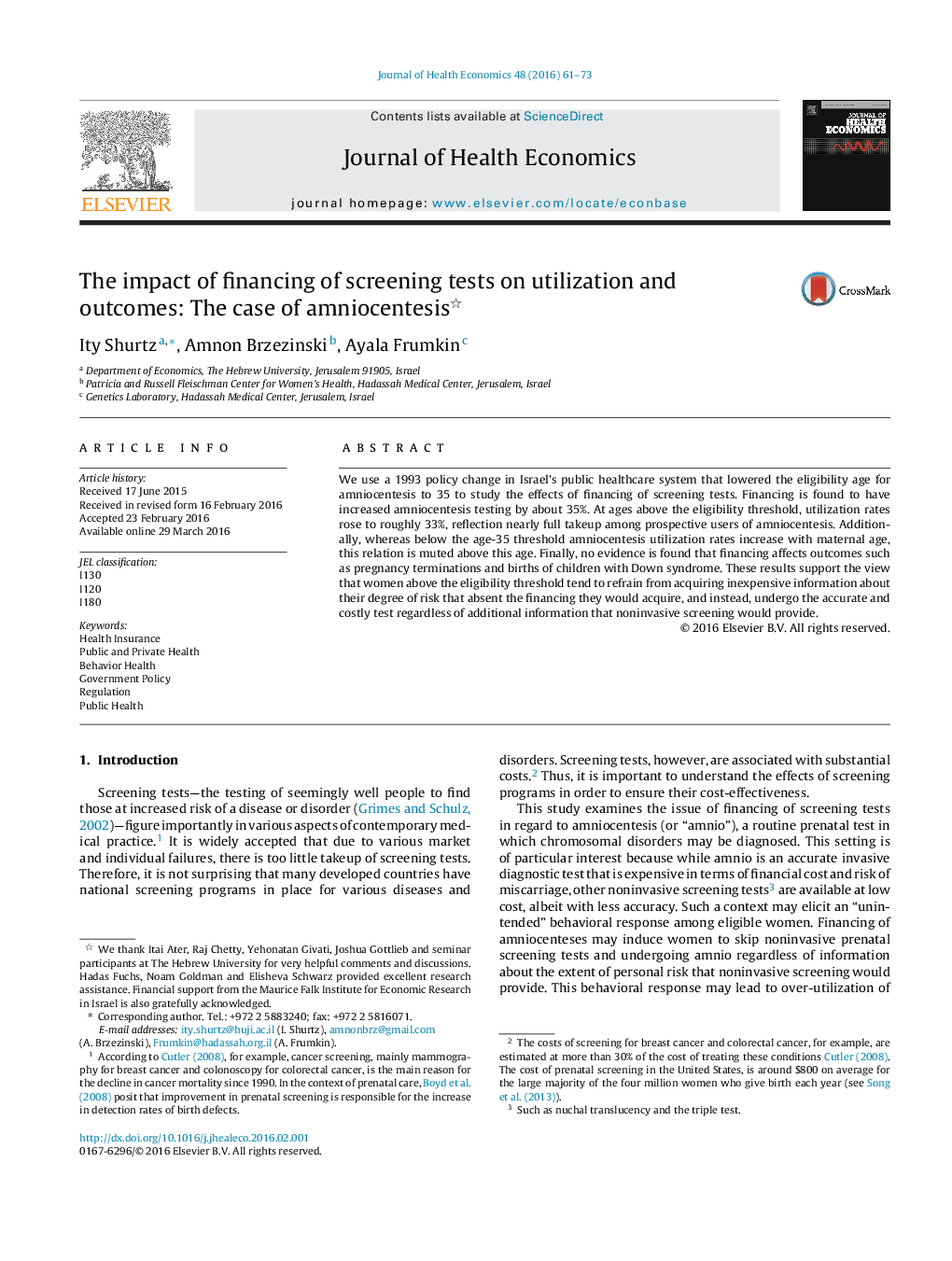| Article ID | Journal | Published Year | Pages | File Type |
|---|---|---|---|---|
| 7363173 | Journal of Health Economics | 2016 | 13 Pages |
Abstract
We use a 1993 policy change in Israel's public healthcare system that lowered the eligibility age for amniocentesis to 35 to study the effects of financing of screening tests. Financing is found to have increased amniocentesis testing by about 35%. At ages above the eligibility threshold, utilization rates rose to roughly 33%, reflection nearly full takeup among prospective users of amniocentesis. Additionally, whereas below the age-35 threshold amniocentesis utilization rates increase with maternal age, this relation is muted above this age. Finally, no evidence is found that financing affects outcomes such as pregnancy terminations and births of children with Down syndrome. These results support the view that women above the eligibility threshold tend to refrain from acquiring inexpensive information about their degree of risk that absent the financing they would acquire, and instead, undergo the accurate and costly test regardless of additional information that noninvasive screening would provide.
Related Topics
Health Sciences
Medicine and Dentistry
Public Health and Health Policy
Authors
Ity Shurtz, Amnon Brzezinski, Ayala Frumkin,
